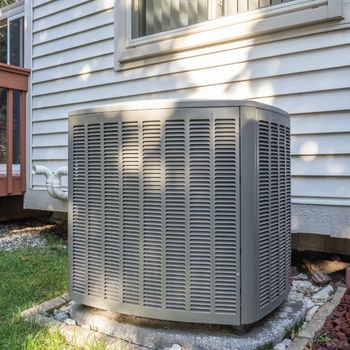Preventative Maintenance Tips for HVAC Systems
 Preventative maintenance is integral to ensure your HVAC system works efficiently. Routine steps can help preserve the system’s lifespan, lessen wear on components, improve energy use and reduce future repair costs.
Preventative maintenance is integral to ensure your HVAC system works efficiently. Routine steps can help preserve the system’s lifespan, lessen wear on components, improve energy use and reduce future repair costs.
You can reference the manual to see when certain parts should be checked or components replaced. Make a yearly schedule to address the following.
Change the Filters
The filters should be checked every one to three months. Otherwise, they become clogged with debris and impact the efficiency of your unit. Be prepared to clean the filter thoroughly or have it replaced. If your system also contains an air purifier, you will need to have its filter checked and changed too.
Clean the Condensing Unit
The condensing unit helps move warm air from your home’s interior and cool the interior with outside air. Debris and dirt frequently clog the condensing unit, due to its outdoor location. Forgetting to clean the condenser can performance, causing the system to work harder.
Take a hose and wash all grime and buildup from the outdoor unit. A condenser unit installed inside your home may be difficult to access and require professional assistance.
Remove Debris
Aside from the condenser unit, outdoor debris can affect how well air travels through the system. Remove any visible debris, like branches or leaves and trim back overgrown bushes and vegetation.
Clean the Evaporator and Blower
Located inside the blower or furnace, the evaporator unit is also essential to the cooling process, helping keep the interior at a comfortable temperature. Yet the coil also picks up dust and debris, which affect how the AC unit cools the home.
On the other hand, this part is a bit more complex. As the coil draws in warm air to cool, humidity is also attracted and condenses on its surface. The resulting moisture needs to go somewhere, so it drips into a pan underneath and flows through a tube to a drain and eventually outside. Debris can also accumulate and constant exposure to moisture attracts mold, mildew and algae.
Ignoring maintenance can cause water to build up, potentially resulting in a leak or flooding that can damage parts of your home. To clean this area:
- Use a coil cleaner to remove any accumulated debris.
- The evaporator drain also experiences clogs, which can result in leaks and flooding and cause a strange odor. Have any water drained first before using a wet/dry vacuum to remove any mold, mildew or debris.
- Don’t forget about the drainpipe, as mold or algae may progress to this area. Remove any debris before thoroughly cleaning the pipe.
Contact an HVAC Professional
In addition to these steps, have an HVAC professional assess and thoroughly clean the full system, including refrigerant levels, the blower, the furnace and wires. These visits may include repairs to ensure your system functions at peak performance.
To schedule a routine assessment, contact the HVAC professionals at MJ Fahy & Sons today.




